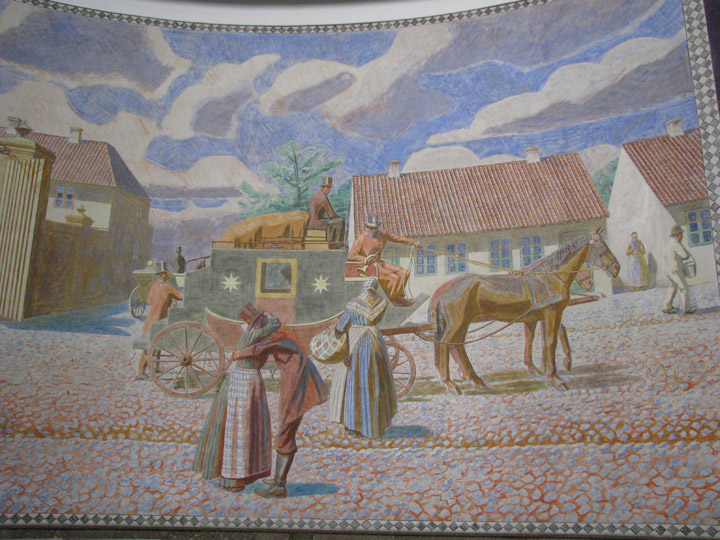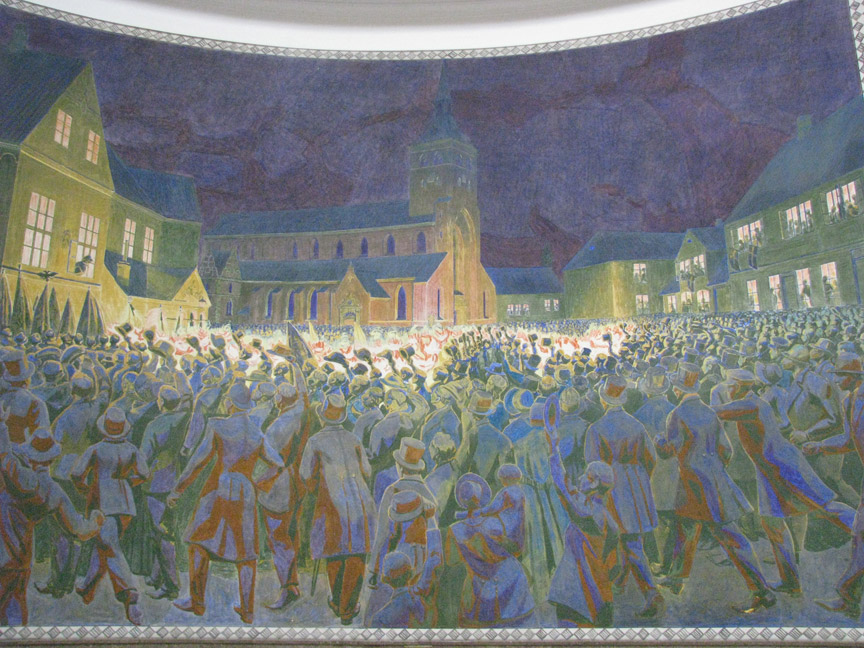

Hans Christian Anderson Museum
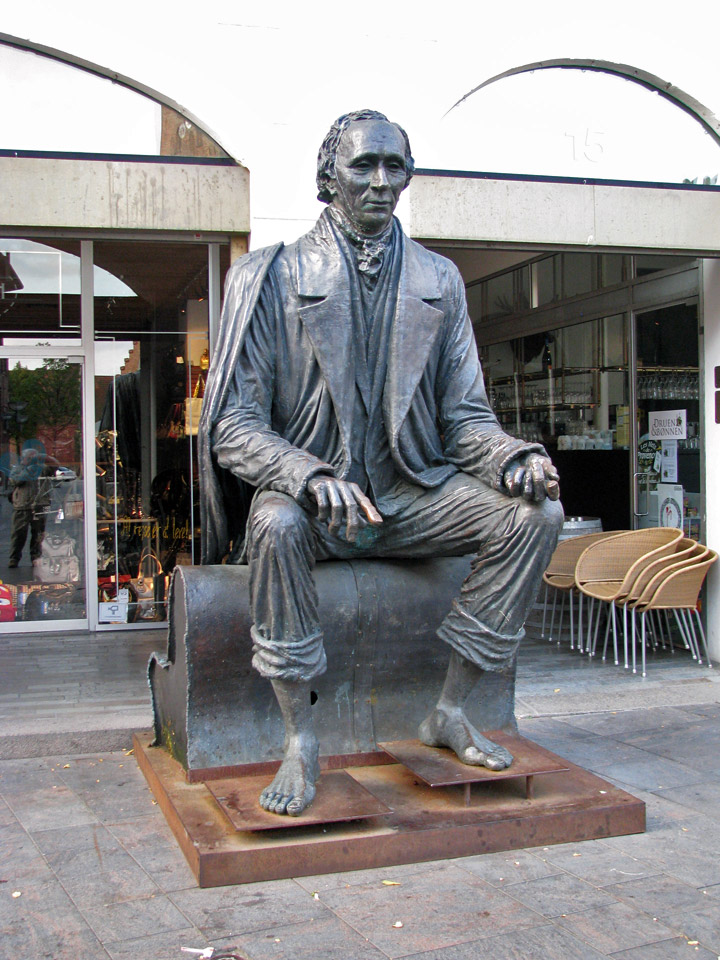
Hans Christian Andersen
Hans Christian Andersen (April 2, 1805 – August 4, 1875) was a Danish author and poet, most famous for his fairy tales. Among his best-known stories are The Steadfast Tin Soldier, The Snow Queen, The Little Mermaid, Thumbelina, The Little Match Girl, The Ugly Duckling and The Red Shoes. During Andersen's lifetime he was feted by royalty and acclaimed for having brought joy to children across Europe. His fairy tales have been translated into over 150 languages and continue to be published in millions of copies all over the world and inspired many other works.
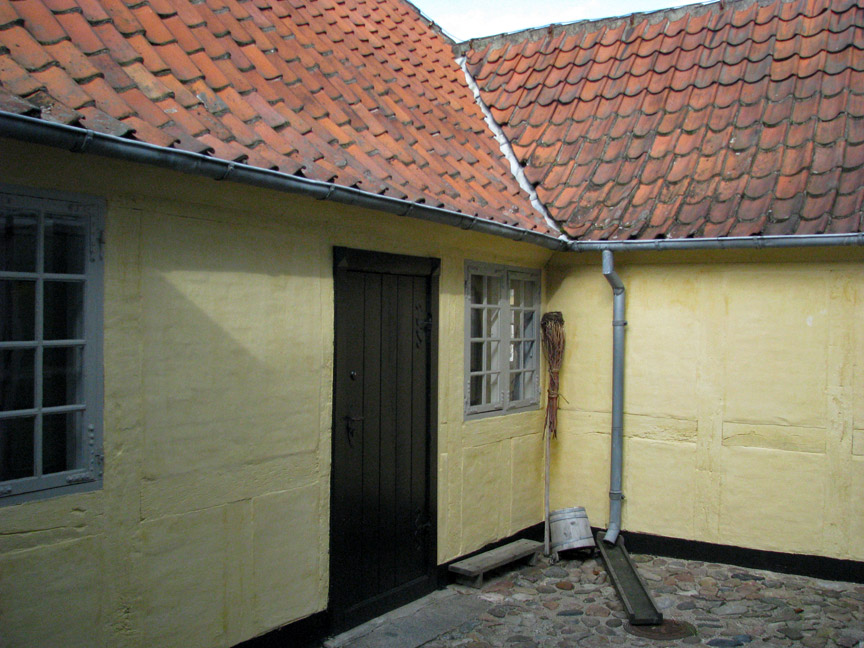
Hans Christian Anderson birth house
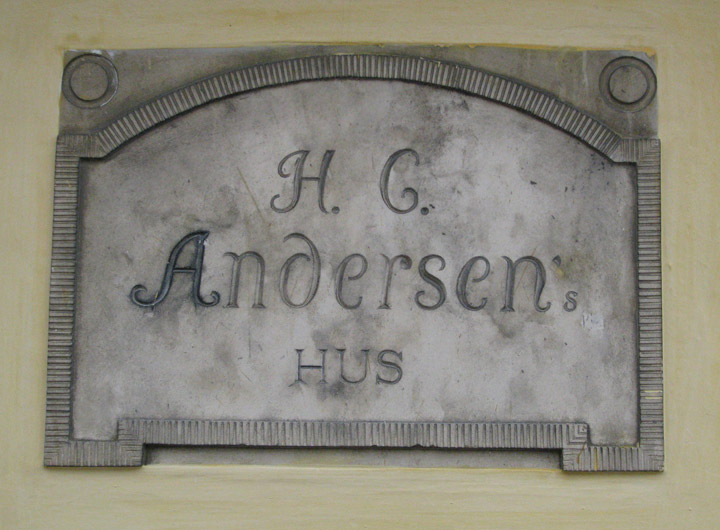
Hans Christian Andersen was born in Odense, Denmark, on Tuesday, April 2, 1805.
Most English (as well as German and French) sources use the name "Hans Christian
Andersen", but in Denmark and the rest of Scandinavia he is usually referred to
as merely "H. C. Andersen". His name "Hans Christian" is a traditional Danish
name and is used as a single name, though originally a combination of two
individual names. It is incorrect to use only one of the two parts without the
other. It is an accepted custom in Denmark to use only the initials in this and
a few other names.
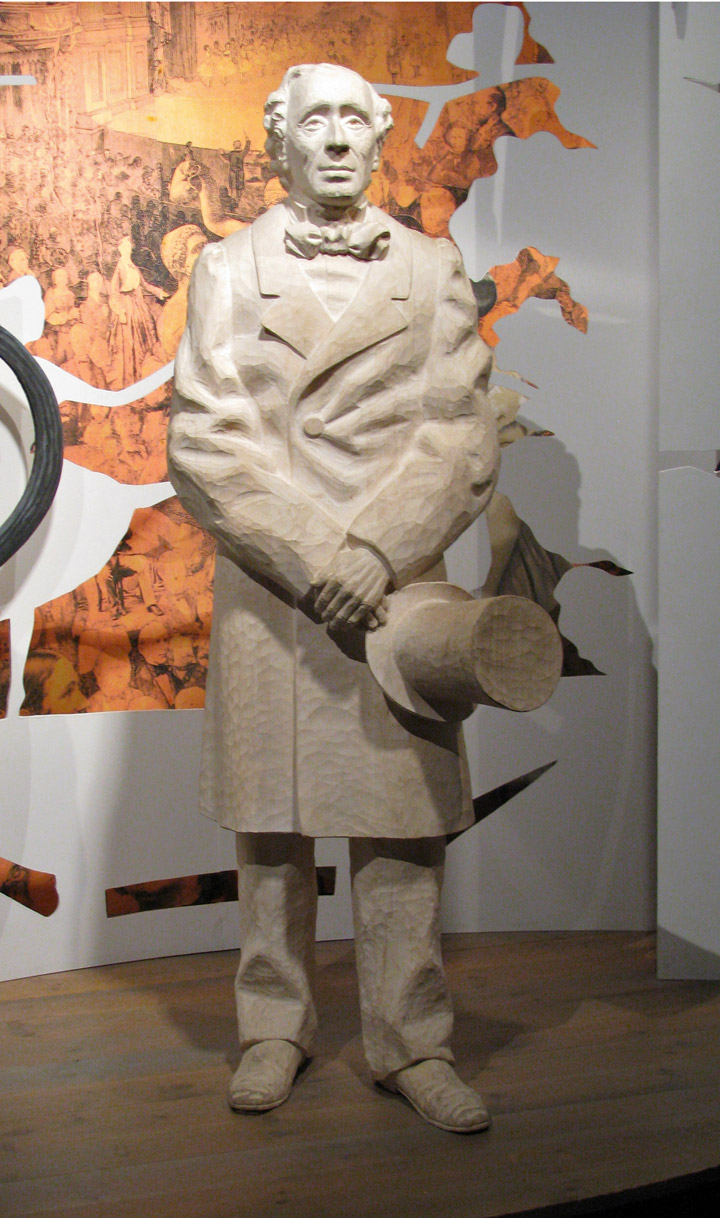
Hans Christian Andersen
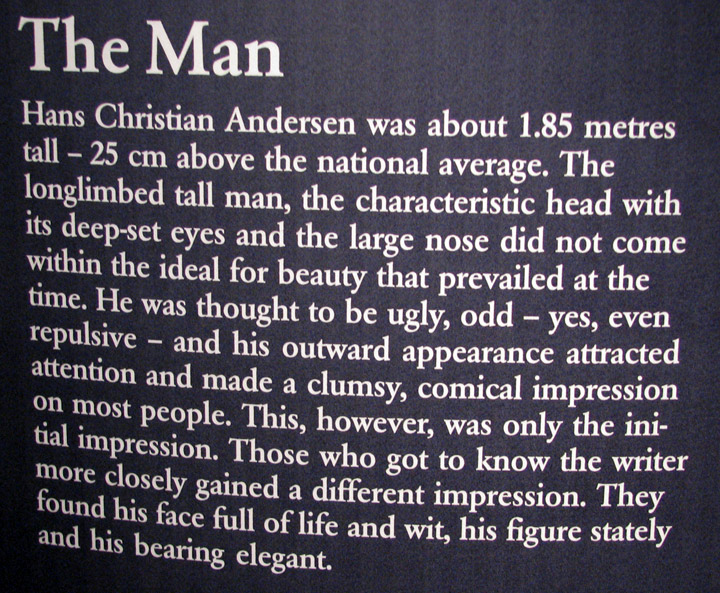
Andersen's father apparently believed that he might be related to nobility, and
according to scholars at the Hans Christian Andersen Center, his paternal
grandmother told him that the family had once been in a higher social class.
However, investigation proves these stories were unfounded. The family
apparently did have some connections to Danish royalty, but these were only
work-related. Nevertheless, the theory that Andersen was the illegitimate son of
royalty continues to persist in Denmark, bolstered by the fact that the Danish
king at the time took a personal interest in Andersen as a youth and paid for
his education. The writer Rolf Dorset insists that not all options have been
explored in determining Andersen's ancestry.
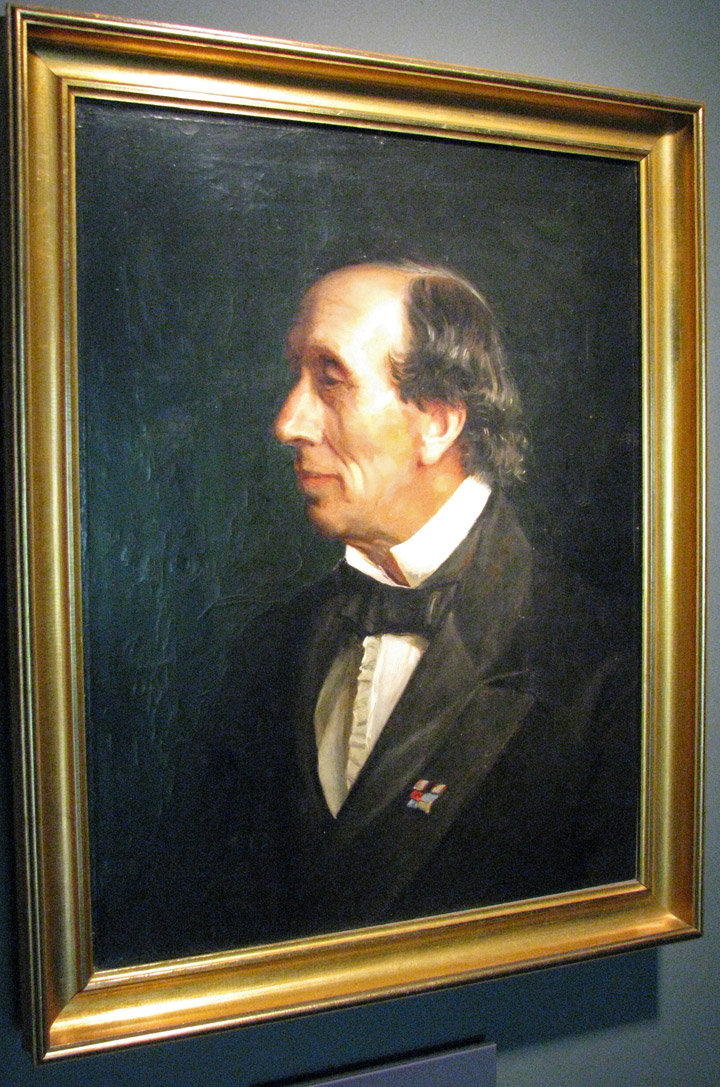
Andersen displayed great intelligence and imagination as a young boy, traits
that were fostered by the indulgence of his parents and by the superstition of
his mother. He made himself a small toy-theatre and sat at home making clothes
for his puppets, and reading all the plays that he could lay his hands upon;
among them were those of Ludvig Holberg and William Shakespeare. Throughout his
childhood, he had a passionate love for literature. He was known to memorize
entire plays by Shakespeare and to recite them using his wooden dolls as actors.
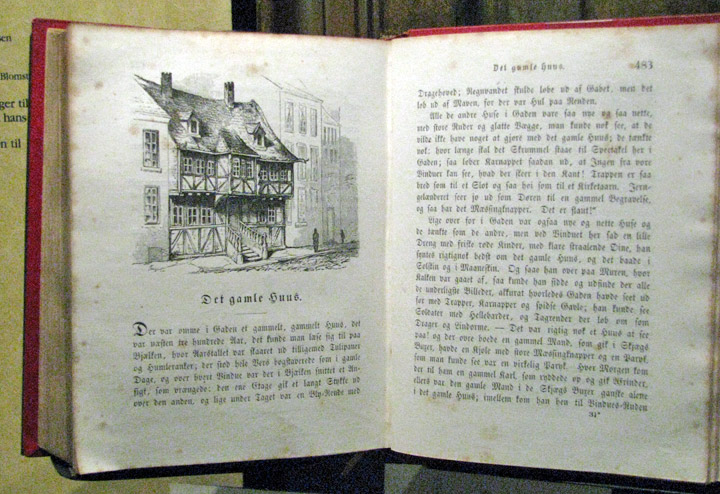
a published story
In 1816, his father died in a fire and, in order to support himself, Andersen worked as an apprentice for both a weaver and a tailor. He later worked in a cigarette factory where his fellow workers humiliated him by betting on whether he was in fact a girl, pulling down his trousers to check. At the age of fourteen, Andersen moved to Copenhagen seeking employment as an actor in the theatre. He had a pleasant soprano voice and succeeded in being admitted to the Royal Danish Theatre. This career stopped short when his voice broke. A colleague at the theatre had referred to him as a poet, and Andersen took this very seriously and began to focus on writing.
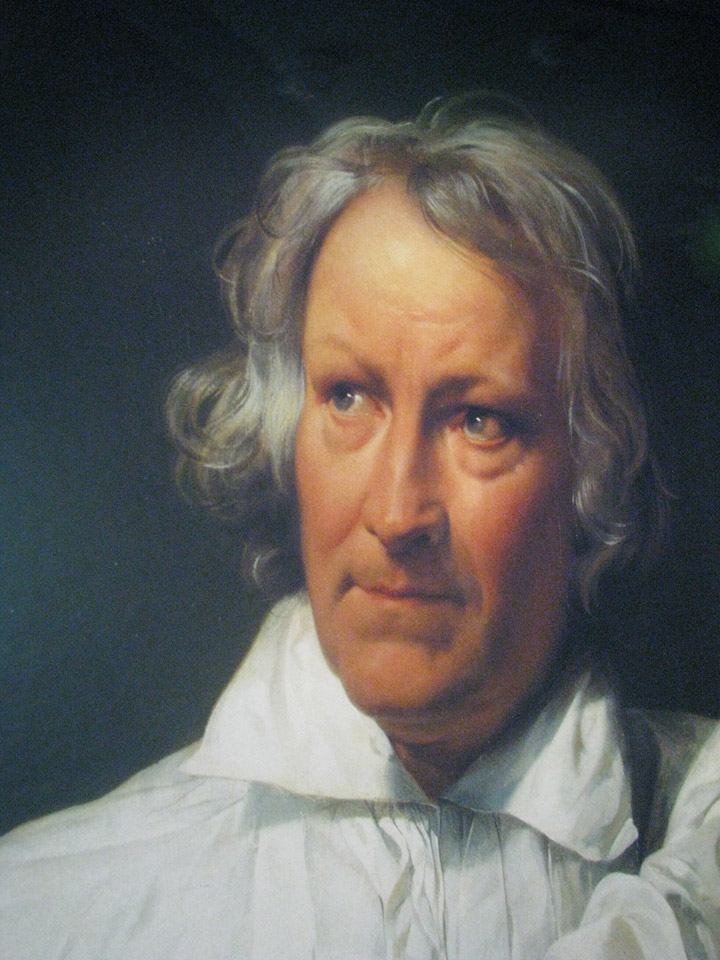
Following an accidental meeting, Jonas Collin started taking an interest in the
odd boy and sent Andersen to the grammar school in Slagelse, paying all his
expenses. Before even being admitted to grammar-school, Andersen had already
succeeded in publishing his first story, The Ghost at Palnatoke's Grave in 1822.
Though an unwilling pupil, Andersen studied both in Slagelse and at a school in
Elsinore until 1827. He later stated that these years had been the darkest and
most bitter parts of his life. He had experienced living in his schoolmaster's
own home, being abused in order to "build his character", and he had been
alienated from his fellow students, being much older than most of them, homely
and unattractive. Furthermore, he was dyslexic, a very likely reason for his
learning difficulties and he later said that the school faculty forbade or
discouraged him to write. He would later learn to speak near fluent English,
Dutch, and German, as well as the Scandinavian languages.
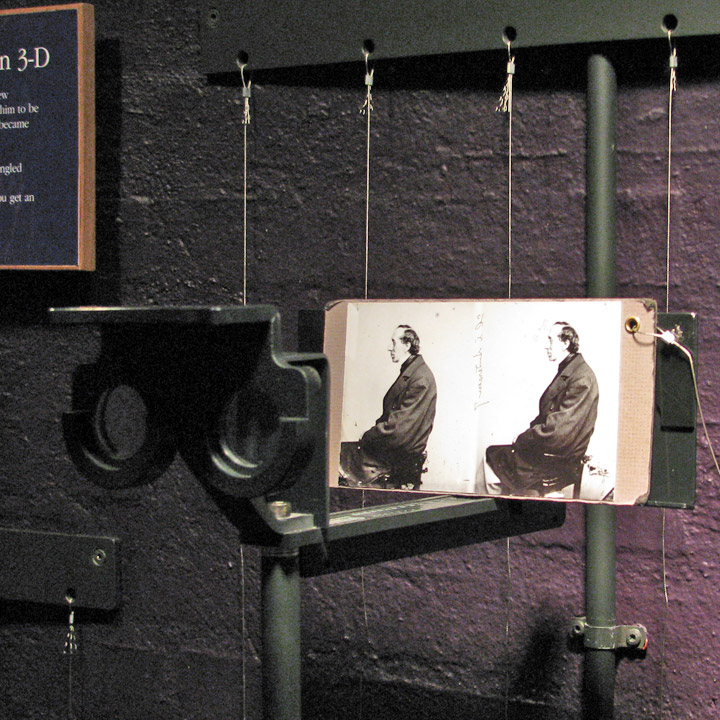
as seen in a stereo viewer
In 1829, Andersen enjoyed a considerable success with a short story entitled "A Journey on Foot from Holmen's Canal to the East Point of Amager". During the same season, he published both a farce and a collection of poems. He had little further progress, however, until 1833 when he received a small traveling grant from the King, making the first of his long European journeys. At Le Locle, in the Jura, he wrote "Agnete and the Merman"; in 1833 he visited the Italian seaside village of Sestri Levante (and is credited with naming its two bays) (see www.voyagefever.com/sestri-levante-part-1 -- annual festival celebrates this); and in October 1834 he arrived in Rome. Andersen's first novel, The Improvisatore, was published in the beginning of 1835, and became an instant success. During these years, H.C. Andersen resided in 20, Nyhavn, where a memorial plaque unveiled on the 8th of May in 1935 as a gift from Peter Schannong was placed.
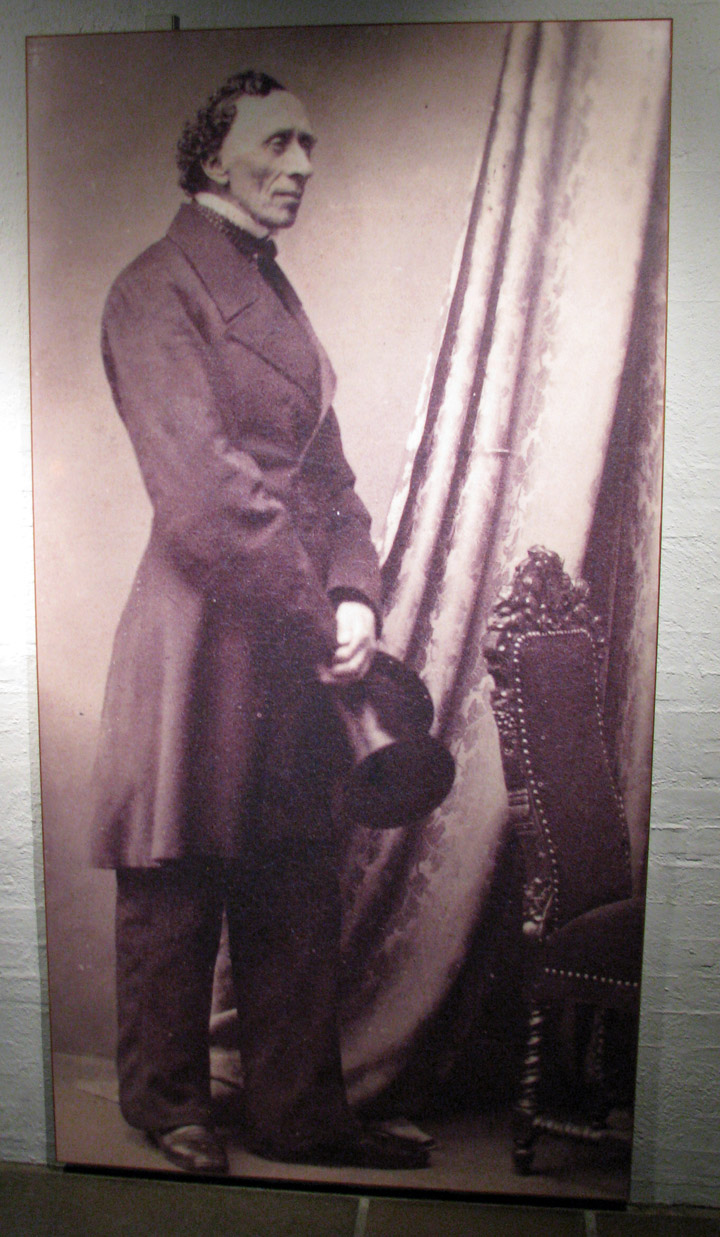
It was during 1835 that Andersen published the first installment of his immortal
Fairy Tales (Danish: Eventyr). More stories, completing the first volume, were
published in 1836 and 1837. The quality of these stories was not immediately
recognised, and they sold poorly. At the same time, Andersen enjoyed more
success with two novels: O.T. (1836) and Only a Fiddler. His Specialty book that
is still known today was the Ugly Duckling. (1837).

an Anderson papercut
After a visit to Sweden in 1837, Andersen became inspired by Scandinavism and committed himself to writing a poem to convey his feeling of relatedness between the Swedes, the Danes and the Norwegians. It was in July 1839 during a visit to the island of Funen that Andersen first wrote the text of his poem Jeg er en Skandinav (I am a Scandinavian).[6] Andersen designed the poem random to capture "the beauty of the Nordic spirit, the way the three sister nations have gradually grown together" as part of a Scandinavian national anthem. Composer Otto Lindblad set the poem to music and the composition was published in January 1840. Its popularity peaked in 1845, after which it was seldom sung.
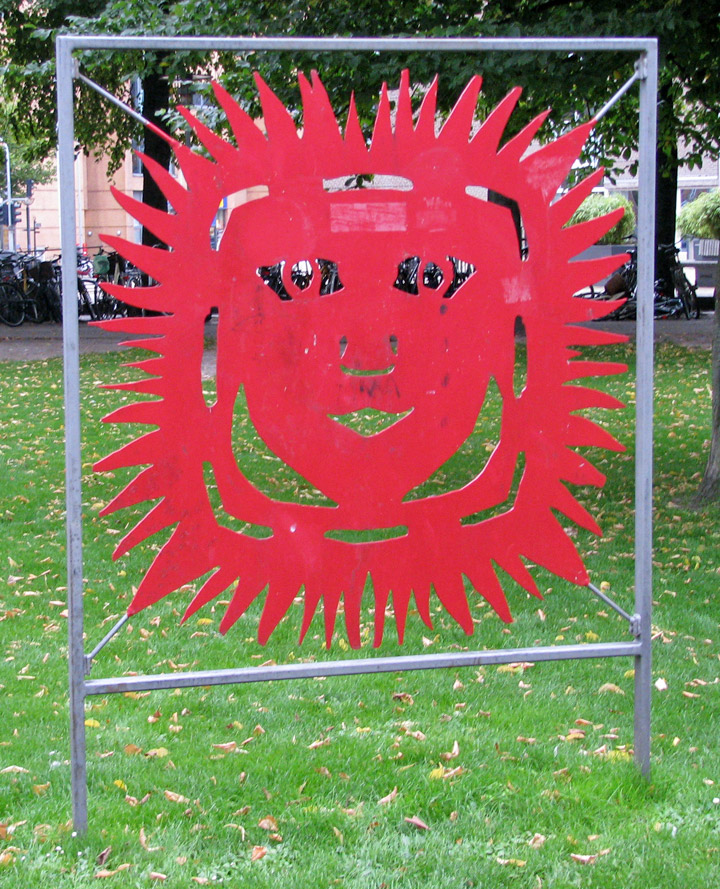
now seen around town
In 1851, he published to wide acclaim In Sweden, a volume of travel sketches. A keen traveller, Andersen published several other long travelogues: Shadow Pictures of a Journey to the Harz, Swiss Saxony, etc. etc. in the Summer of 1831 (A Poet's Bazaar (560), In Spain , and A Visit to Portugal in 1866 (The latter describes his visit with his Portuguese friends Jorge and Jose O'Neill, who were his fellows in the mid 1820s while living in Copenhagen.) In his travelogues, Andersen took heed of some of the contemporary conventions about travel writing; but always developed the genre to suit his own purposes. Each of his travelogues combines documentary and descriptive accounts of the sights he saw with more philosophical excurses on topics such as being an author, immortality, and the nature of fiction in the literary travel report. Some of the travelogues, such as In Sweden, even contain fairy-tales.
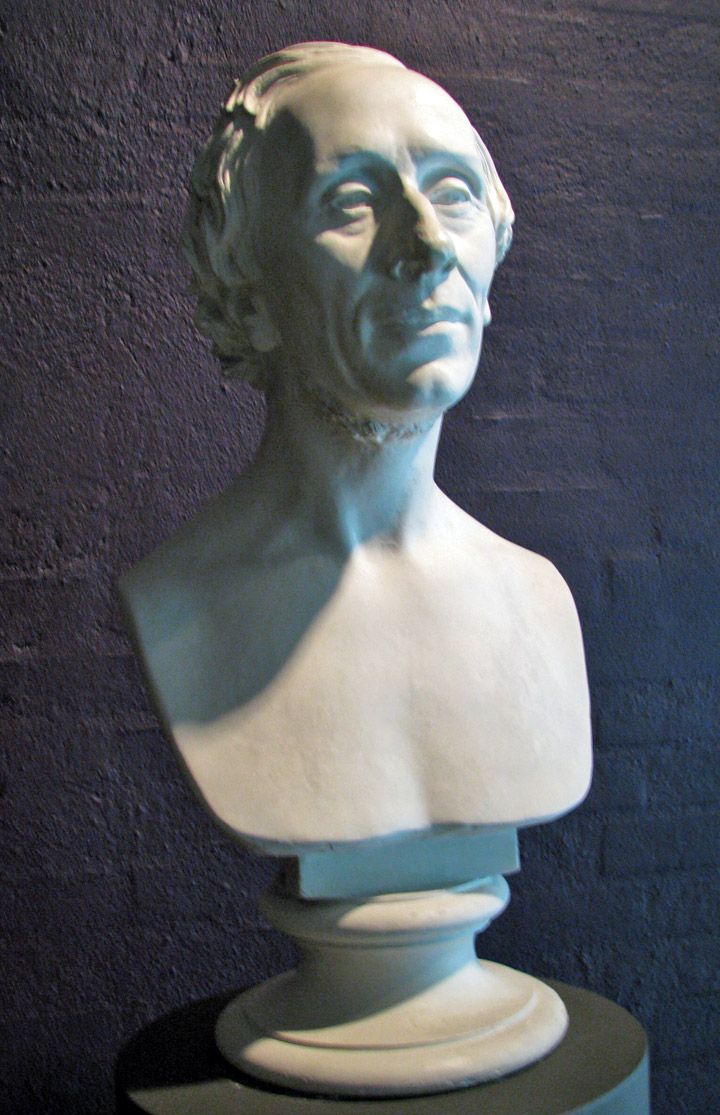
In the 1840s Andersen's attention returned to the stage, however with no great
success at all. His true genius was however proved in the miscellany the
Picture-Book without Pictures (1840). The fame of his Fairy Tales had grown
steadily; a second series began in 1838 and a third in 1845. Andersen was now
celebrated throughout Europe, although his native Denmark still showed some
resistance to his pretensions. Between 1845 and 1864, H. C. Andersen lived in
67, Nyhavn, where a memorial plaque is placed.

recreation of his work room in Nyhavn
In June 1847, Andersen paid his first visit to England and enjoyed a triumphal social success during the summer. The Countess of Blessington invited him to her parties where intellectual and famous people could meet, and it was at one party that he met Charles Dickens for the first time. They shook hands and walked to the veranda which was of much joy to Andersen. He wrote in his diary "We had come to the veranda, I was so happy to see and speak to England's now living writer, whom I love the most."
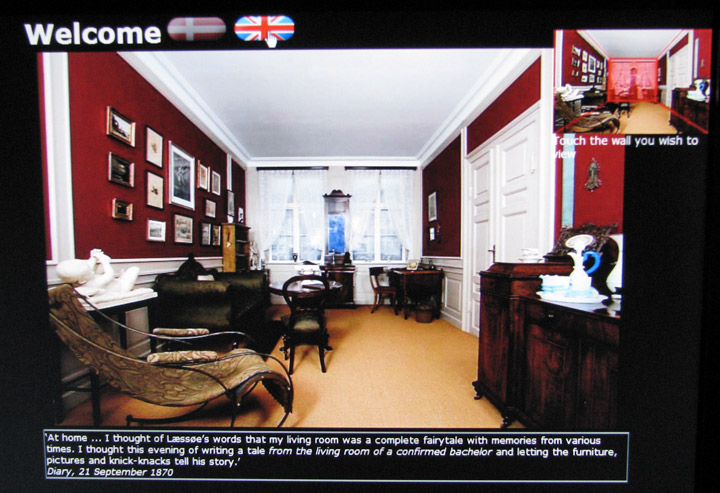
computer description of his living quarters
Ten years later, Andersen visited
England, primarily to visit Dickens. He stayed at Dickens' home for five weeks,
oblivious to Dickens' increasingly blatant hints for him to leave. Dickens'
daughter said of Andersen, "He was a bony bore, and stayed on and on." Shortly
after Andersen left, Dickens published David Copperfield, featuring the
obsequious Uriah Heep, who is said to have been modeled on Andersen. Andersen
quite enjoyed the visit, and never understood why Dickens stopped answering his
letters.

his traveling case
Modern biographies often portray him as attracted to both women and men, and there is very clear evidence for both.
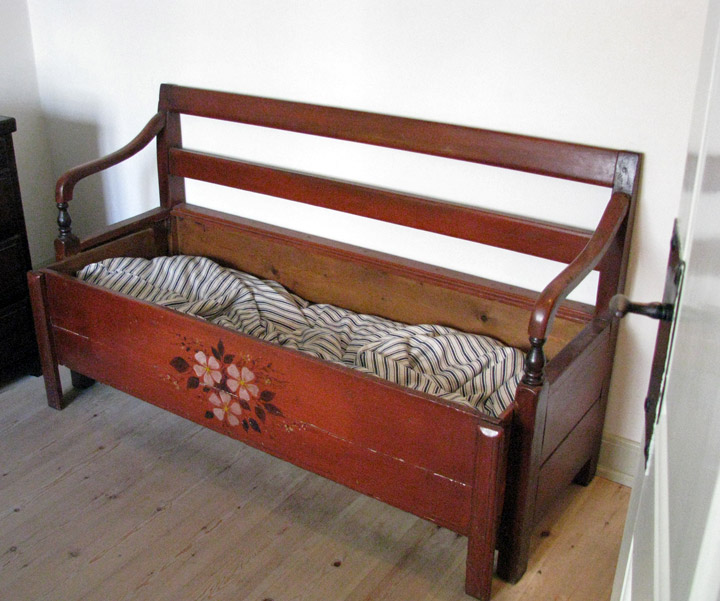
in the Anderson birth house
Andersen often fell in love with unattainable women and many of his stories are interpreted as references to his sexual grief. The most famous of these was the opera soprano Jenny Lind. One of his stories is "The Nightingale", was a written expression of his passion for Lind, and became the inspiration for her nickname, the "Swedish Nightingale". Andersen was often shy around women and had extreme difficulty in proposing to Lind. When Lind was boarding a train to take her to an opera concert, Anderson gave Lind a letter of proposal. Her feelings towards him were not mutual; she saw him as a brother, writing to him in 1844 "farewell... God bless and protect my brother is the sincere wish of his affectionate sister, Jenny." A girl named Riborg Voigt was the unrequited love of Andersen's youth. A small pouch containing a long letter from Riborg was found on Andersen's chest when he died. At one point he wrote in his diary: "Almighty God, thee only have I; thou steerest my fate, I must give myself up to thee! Give me a livelihood! Give me a bride! My blood wants love, as my heart does!" Other disappointments in love included Sophie Ørsted, the daughter of the physicist Hans Christian Ørsted, and Louise Collin, the youngest daughter of his benefactor Jonas Collin.
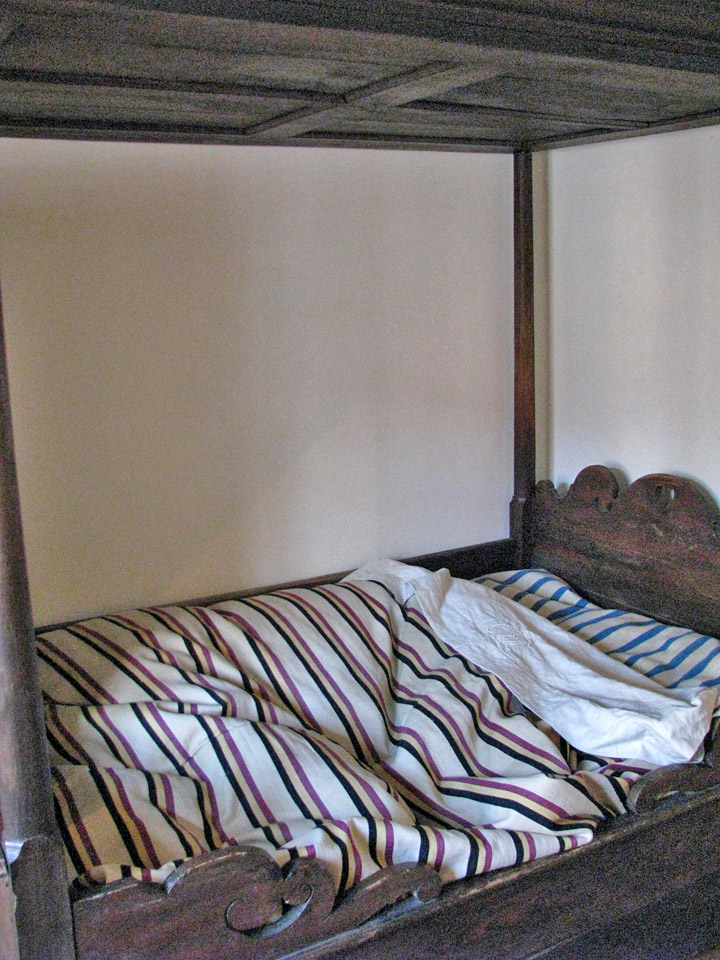
bed in the birth house
Just like his interest in women, Andersen would become attracted to nonreciprocating men. For example Andersen wrote to Edvard Collin, "I languish for you as for a pretty Calabrian wench... my sentiments for you are those of a woman. The femininity of my nature and our friendship must remain a mystery." Collin, who did not prefer men, wrote in his own memoir: "I found myself unable to respond to this love, and this caused the author much suffering." Likewise, the infatuations of the author for the Danish dancer Harald Scharff and Carl Alexander, the young hereditary duke of Saxe-Weimar-Eisenach, did not result in any relationships. Four of his letters to Carl are edited in an anthology by Rictor Norton.
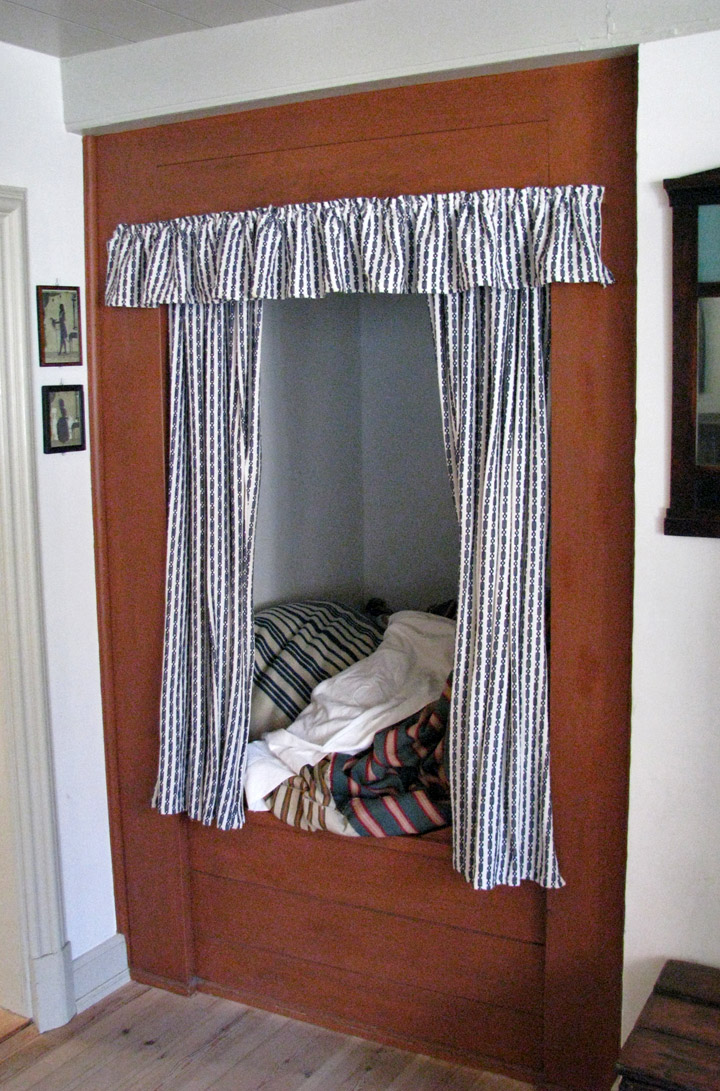
In Andersen's early life, his private journal records his refusal to have sexual
relations.
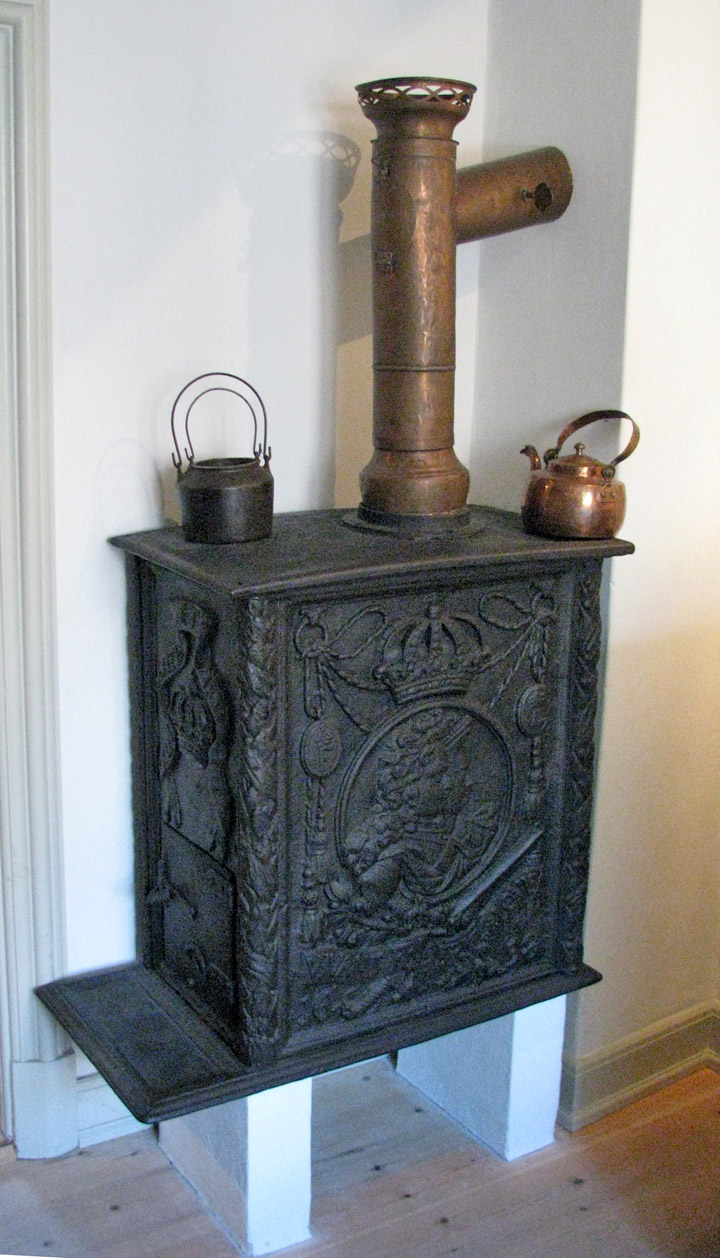
in the birth house
In the spring of 1872, Andersen fell out of bed and was severely hurt. He never quite recovered, but he lived until August 4, 1875, dying painfully in a house called Rolighed (literally: calmness), near Copenhagen, the home of his close friends Moritz Melchior, a banker and his wife. Shortly before his death, he had consulted a composer about the music for his funeral, saying: "Most of the people who will walk after me will be children, so make the beat keep time with little steps." His body was interred in the Assistens Kirkegård in the Nørrebro area of Copenhagen. At the time of his death, he was an internationally renowned and treasured artist. He received a stipend from the Danish Government as a "national treasure". Before his death, steps were already underway to erect the large statue in his honor, which was completed and is prominently placed at the town hall square in Copenhagen.
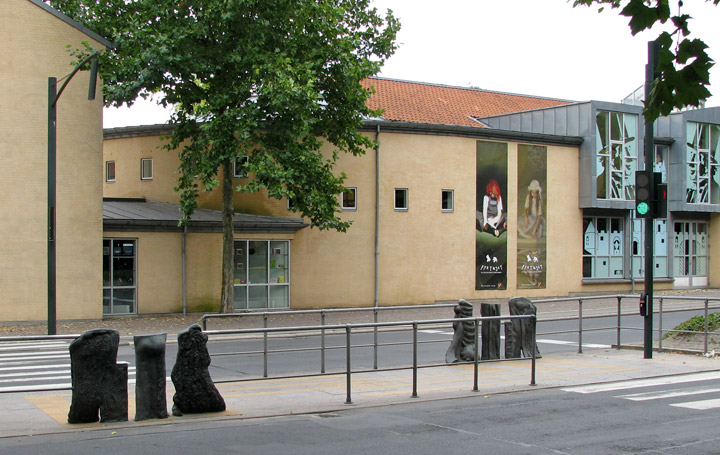
the modern Museum
The critic Georg Brandes had
questioned Andersen about whether he would write his autobiography. He claimed
that it had already been written — "The Ugly Duckling".
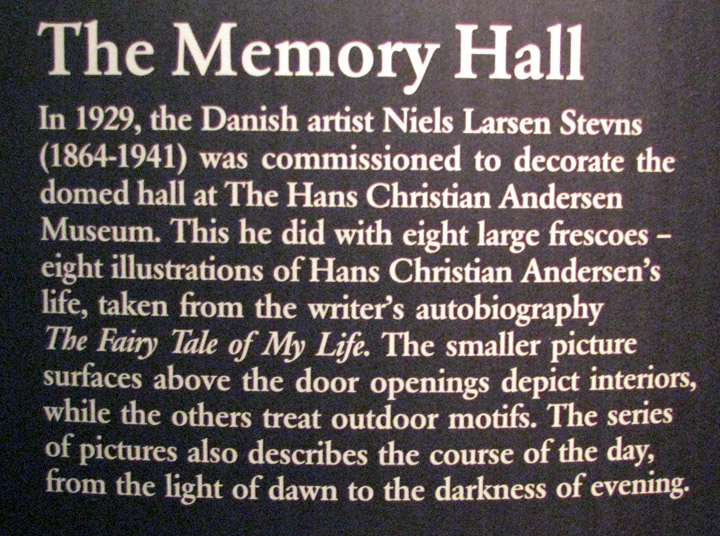
The Memory Hall
In the English-speaking world, stories such as "Thumbelina", "The Snow Queen", "The Ugly Duckling", "The Little Mermaid", "The Emperor's New Clothes", and "The Princess and the Pea" remain popular and are widely read. "The emperor's new clothes" and "ugly duckling" have both passed into the English language as well-known expressions.
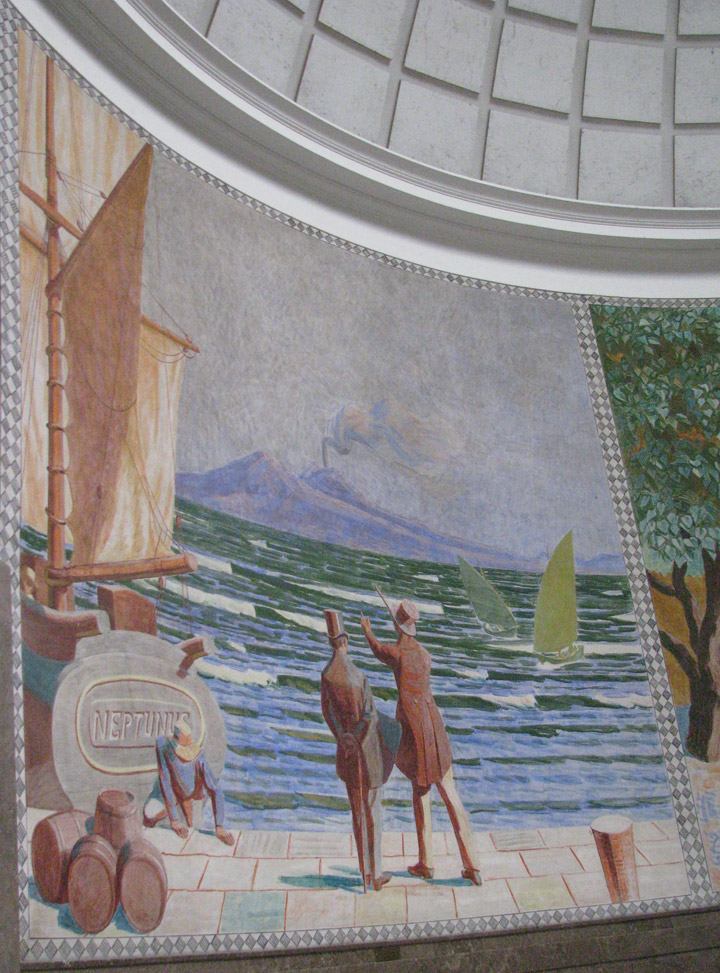
In the Copenhagen harbor there is a statue of The Little Mermaid, placed in
honour of Hans Christian Andersen. 2 April, Andersen's birthday, is celebrated
as International Children's Book Day.
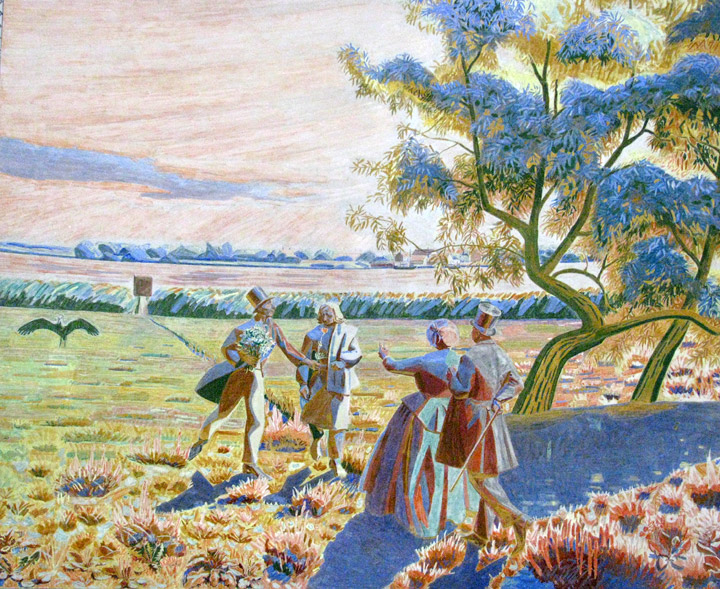
The year 2005 was the bicentenary of Andersen's birth and his life and work was
celebrated around the world. In Denmark, particularly, the nation's most famous
son has been feted like no other literary figure.
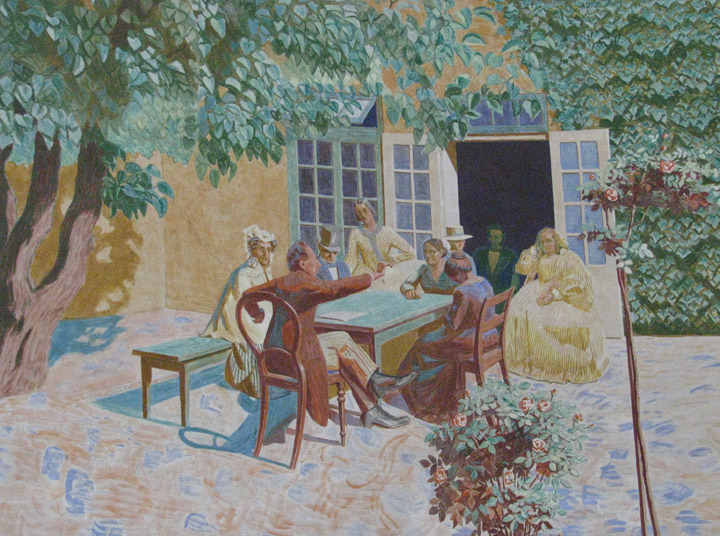
In the city of Lublin, Poland is the Puppet Theatre of Hans Christian Andersen.
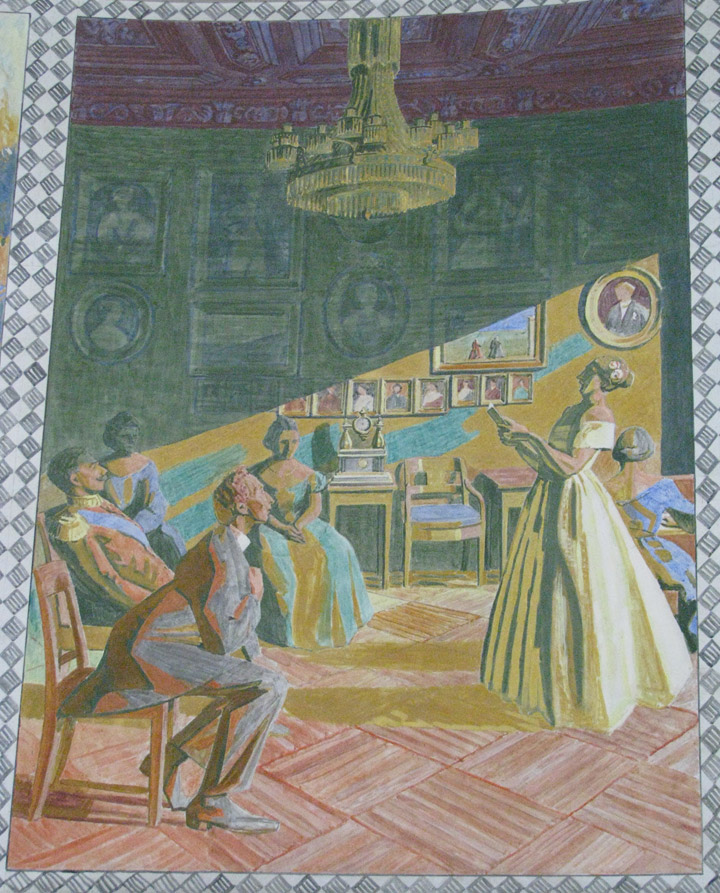
A $12.5 million theme park based on Andersen's tales and life opened in Shanghai
at the end of 2006. Multi-media games as well as all kinds of cultural contests
related to the fairytales are available to visitors. He was chosen as the star
of the park because he is a "nice, hardworking person who was not afraid of
poverty", Shanghai Gujin Investment general manager Zhai Shiqiang was quoted by
the AFP news agency as saying
Text from Wikipedia
